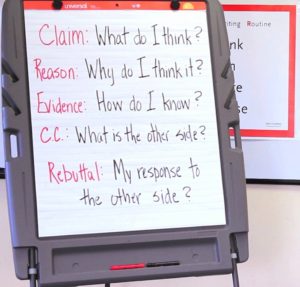By Amanda Lenhart, Sousan Arafeh, Aaron Smith and Alesandra Macgill
Teenagers’ lives are filled with writing. All teens write for school, and 93% of teens say they write for their own pleasure. Most notably, the vast majority of teens have eagerly embraced written communication with their peers as they share messages on their social network pages, in emails and instant messages online, and through fast-paced thumb choreography on their cell phones. Parents believe that their children write more as teens than they did at that age.
This raises a major question: What, if anything, connects the formal writing teens do and the informal e-communication they exchange on digital screens?
To read the report go to the Complete Report PDF.
See especially section 8, which starts on p. 51
Teens are motivated to write by relevant topics, high expectations, an interested audience and opportunities to write creatively.
Teens write for a variety of reasons—as part of a school assignment, to get a good grade, to stay in touch with friends, to share their artistic creations with others or simply to put their thoughts to paper (whether virtual or otherwise). In our focus groups, teens said they are motivated to write when they can select topics that are relevant to their lives and interests, and report greater enjoyment of school writing when they have the opportunity to write creatively. Having teachers or other adults who challenge them, present them with interesting curricula and give them detailed feedback also serves as a motivator for teens. Teens also report writing for an audience motivates them to write and write well.
For more on why teens write and what motivates them, please see Part 8: What Teens Tell Us Encourages Them to Write
Here are some of the highlights from this section:
- What prompts teens to write?
- Teen ideas for making school writing successful – what works and what doesn’t.
- Teens get greater enjoyment from the writing they do outside of school than the writing they do in school, and enjoyment of personal writing does not always translate into enjoyment of school writing.
- Enjoyment of school writing is lowest among older boys.
- School writing enjoyment is not correlated with the length or frequency of school writing, and is only loosely related to the types of writing assignments teens do at school.
- Teens who enjoy writing are likely to view writing skills as essential to their future success and receive higher marks in their writing classes.
- Teens like having the opportunity to select their topics for school writing assignments.
- Teens’ motivation to write well comes from getting good feedback – especially from a great teacher.
- Students don’t write for school unless they are assigned to do it.
- Cookie-cutter, boring curricula don’t help and the teacher should at least be modestly interested in writing … and in students.
- High expectations really help.
- What inspires teens’ personal and social writing?
- Learning Writing is a Growth Process.
